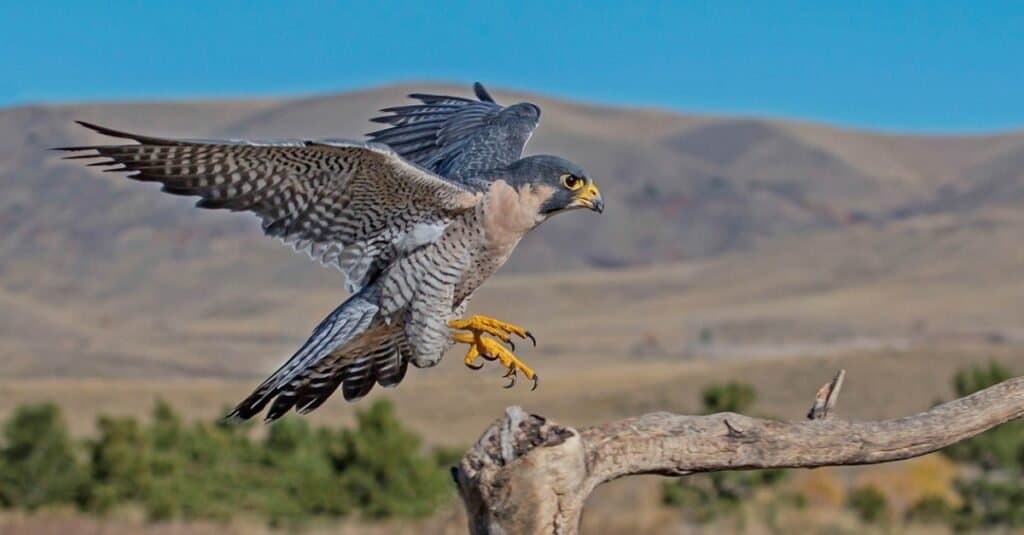You won’t be able to take your eyes off this spectacular airborne battle sequence. A female peregrine falcon is attacking a pelican that she feels has got too close to her nest and her young.
The attack is ferocious and the falcon ends up upside down at one stage! The bird of prey is more agile in the air and seems to be winning even though it is only half the size of the pelican.
Keep scrolling to see this remarkable and shocking video for yourself.
Watch the Amazing Display Here
Where Do Peregrine Falcons Normally Live?
Peregrine falcons are all over the world except in rainforests and the coldest Arctic regions. They are one of the most widespread terrestrial vertebrate species on the planet.
Some populations migrate long distances, traveling between their breeding ground and warmer winter ranges. When they are migrating, you will typically see them along sea coasts and lake shores as well as in mountain ranges or even out at sea!
They are one of the best-known raptors in the US, and we have three subspecies of peregrines living in North America. These are the American or continental peregrine, the tundra or arctic peregrine, and Peale’s peregrine falcon.

Peregrine falcons often nest on cliff edges.
©iStock.com/DawnKey
In the past, their populations suffered catastrophic losses caused by persistent manmade organic pollutants in the environment.
They were federally listed as endangered in the 1970s and environmental protection measures have resulted in their populations recovering and now growing. They are no longer considered an endangered species in the US thanks to the efforts of the federal government.
The name ‘peregrine’ is from the Latin word ‘peregrinus’, which means ‘foreigner’ or ‘traveler.’ They have a well-deserved reputation for their superb aerial skills.
Where Do Peregrine Falcons Build Their Nests?
This female was protecting her nest. Interestingly, these birds do not normally nest in trees! Instead, they choose grassy or earthen cliff ledges – often in quarries or other inaccessible and undisturbed locations. They lay their eggs in small depressions that they make in soil or gravel. However, they do sometimes use abandoned stick nests built in trees by other birds when they are in a pinch.
The breeding season starts in early April and continues into July in the US. Do not disturb the birds during this time – even pelicans! Let them have peace as they do nature’s work.
Thank you for reading! Have some feedback for us? Contact the AZ Animals editorial team.








